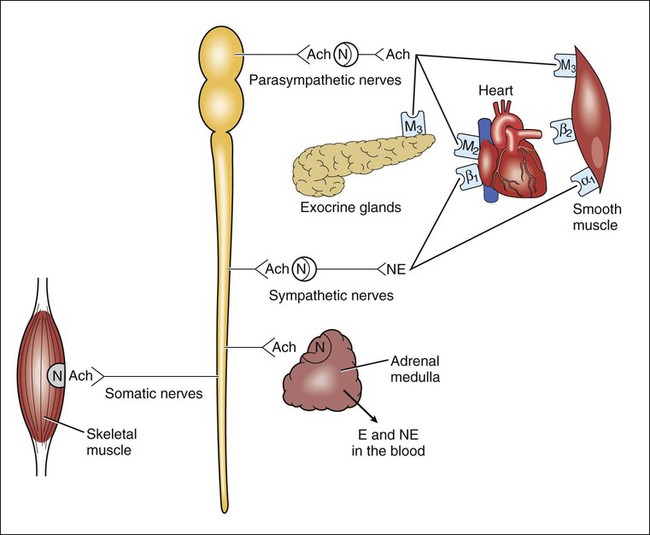

The Autonomic Nervous System (ANS) is the involuntary division of the nervous system. For example, we are not aware when our blood vessels change size, and we are (usually) unaware when our hearts speed up or slow down. We are usually quite unaware of the functioning of our autonomic system because it functions in a reflexive and involuntary manner. The autonomic nervous system is part of the peripheral nervous system and controls the function of many muscles, glands and organs within the body. Reciprocally controlled increased activity in one division is accompanied by a corresponding decrease in the other.The organs of our body (viscera), such as the heart, intestines and stomach, are regulated by a branch of the nervous system known as the autonomic nervous system. Indeed, the two divisions of the autonomic nervous system are usually However, the heart rate can be reduced more rapidly by simultaneously increasing activity in the parasympathetic supply to the heart (applying the brake). In a similar manner, a sympathetically accelerated heart rate could gradually be reduced to normal following a stressful situation by decreasing the firing rate in the cardiac sympathetic nerve (letting up on the accelerator). If you simultaneously apply the brake as you lift up on the accelerator, however, you can come to a more rapid, controlled stop. If an animal suddenly darts across the road as you are driving, you could eventually stop if you just take your foot off the accelerator, but you might stop too slowly to avoid hitting the animal. The dual control exerted by the autonomic system provides more precise control, similar to the accelerator-and-brake system in an automobile. Because digestive and urinary activities are not essential in meeting the threat, the sympathetic system inhibits these activities.

Sweating is promoted in anticipation of excess heat production by the physical exertion. Furthermore, the pupils dilate and the eyes adjust for far vision, letting the person visually assess the entire threatening scene. The heart beats more rapidly and more forcefully, blood pressure is elevated by generalized constriction (narrowing) of the blood vessels, respiratory airways open wide to permit maximum airflow, glycogen (stored sugar) and fat stores are broken down to release extra fuel into the blood, and blood vessels supplying skeletal muscles dilate (open more widely).Īll these responses are aimed at providing an increased flow of oxygenated, nutrient-rich blood to the skeletal muscles in anticipation of strenuous physical activity. Think about the body resources needed in such circumstances. This response is typically referred to as a fight-or-flight response, because the sympathetic system readies the body to fight against or flee from the threat-for example, running away from a dog that is chasing you. The sympathetic system promotes responses that prepare the body for strenuous physical activity in emergency or stressful situations, such as a physical threat from the outside.

The actions elicited by the efferent neurons are essential for homeostasis. The efferent division of the peripheral nervous system is the final link in the CNS control of the body. The somatic nervous system acts through the release of a neurotransmitter at the neuromuscular junction, causing skeletal muscle contractions. The key to precise autonomic control is in the neurotransmitters acetylcholine and norepinephrine and the dual innervation by the sympathetic and parasympathetic systems. Voluntary and involuntary effector organs are controlled using the somatic and autonomic nervous systems, respectively. The transmitted signals are often responses of the CNS that tend to maintain homeostasis. The CNS transmits impulses to the effector organs through the efferent nerves of the peripheral nervous system (PNS). The nervous system, one of the two major regulatory systems of the body, consists of the central nervous system, composed of the brain and spinal cord, and the peripheral nervous system, composed of the afferent and efferent nerves that transmit signals between the CNS and the periphery.


 0 kommentar(er)
0 kommentar(er)
